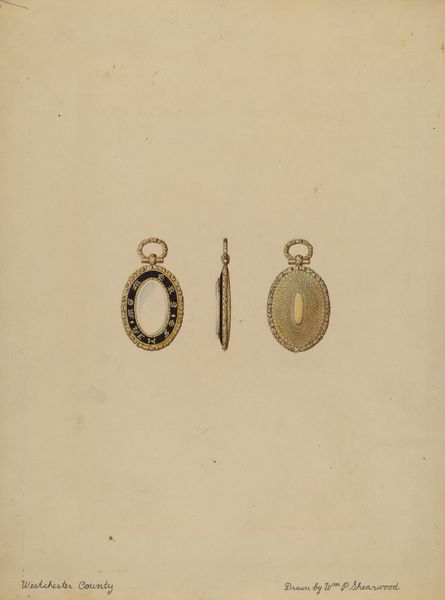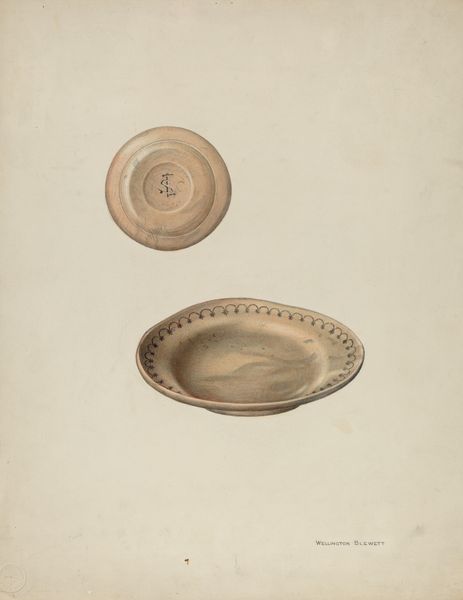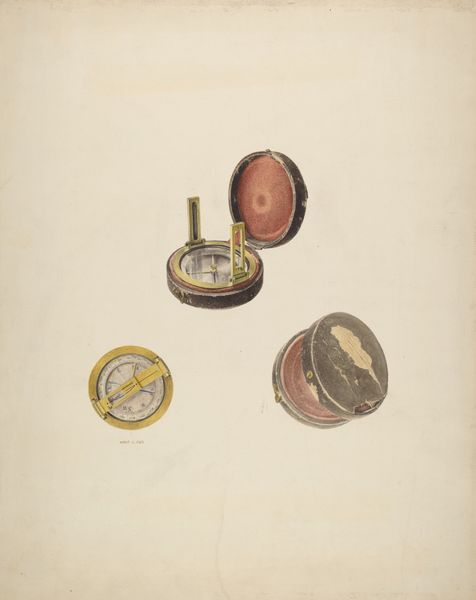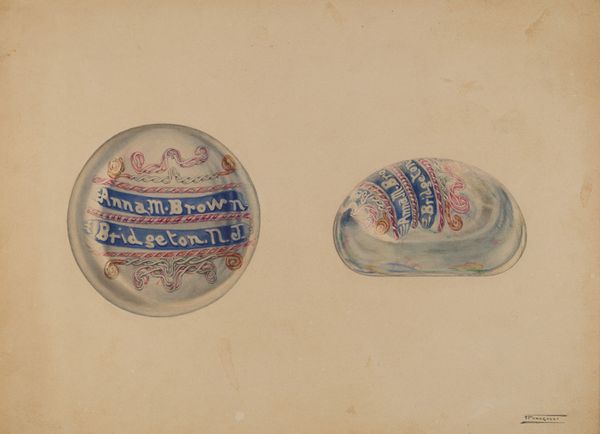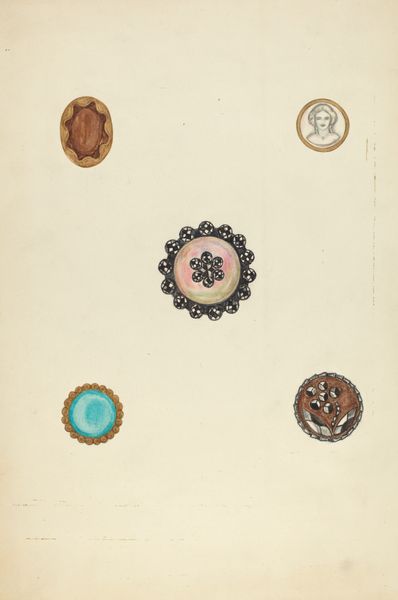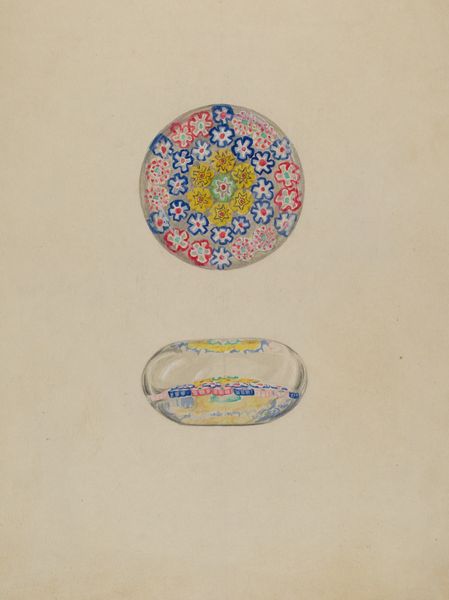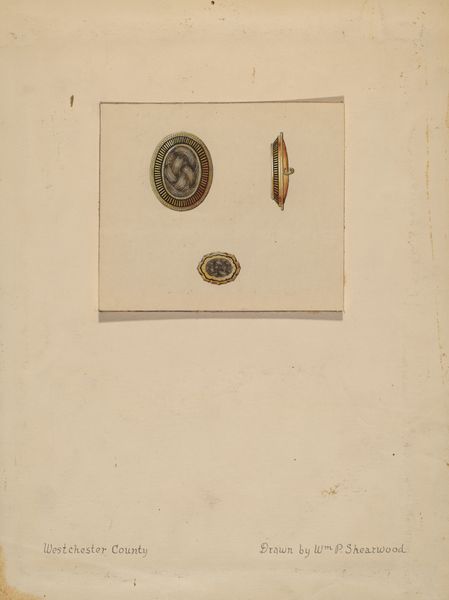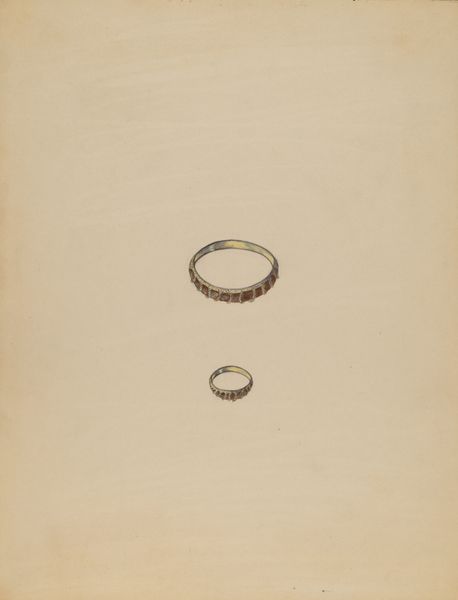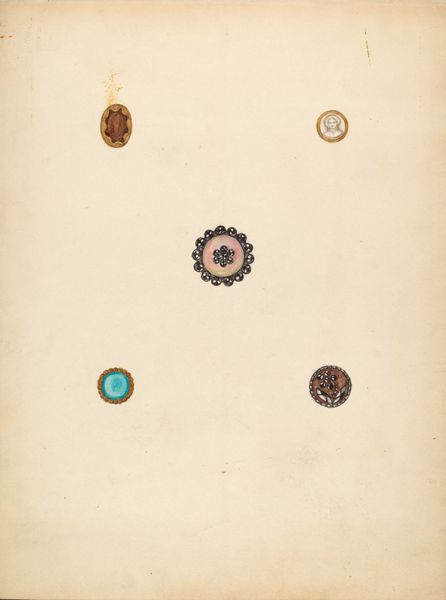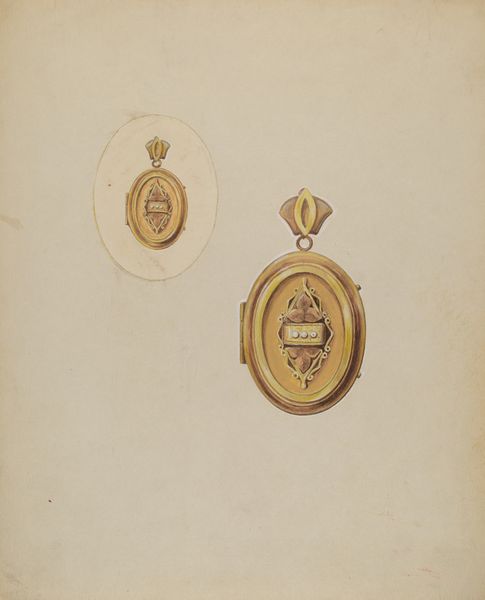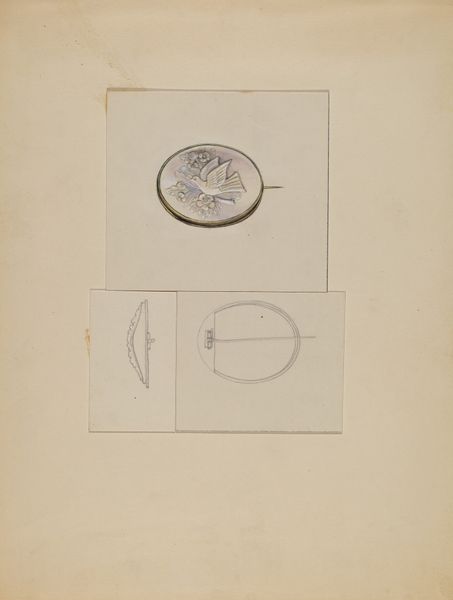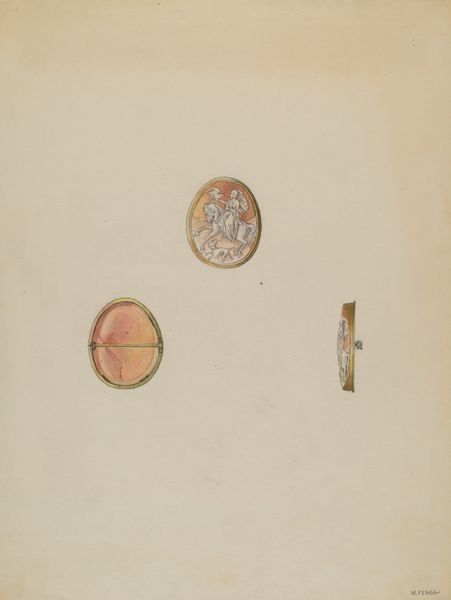
drawing, watercolor
#
drawing
#
watercolor
#
modernism
#
watercolor
Dimensions: overall: 26 x 36.1 cm (10 1/4 x 14 3/16 in.) Original IAD Object: 13 1/2" long; 7 1/2" wide; 5" high
Copyright: National Gallery of Art: CC0 1.0
Editor: This is Cornelius Frazier's "Epaulette Box," made around 1936. It's a drawing and watercolor on paper, and it strikes me as a rather intimate still life. The presentation is simple. What do you see in this piece that really catches your attention? Curator: This piece, viewed through the lens of art history, provides insight into the cultural values associated with personal objects and the social contexts that influenced their creation and interpretation. The act of meticulously rendering an everyday object, an epaulette box, elevates it. I think it invites questions about value, memory, and perhaps the economic circumstances influencing the artist’s choices. Consider what possessing such an item signified at that time, particularly the implication of military affiliation embedded in this "epaulette." Does the artist perhaps challenge or reaffirm social stratification by depicting such a token? Editor: I see what you mean, almost like an elevation of the mundane through artistic practice. So it wasn't just about painting what was visually present, but reflecting on society's relationship with military culture at the time? Curator: Precisely. Moreover, let us reflect on why Frazier chose *this* particular object and whether the medium used and style point toward a commentary about accessibility, consumption and the representation of material goods at the intersection of identity and status. How does Frazier negotiate visibility and viewership using watercolor to depict this ‘empty mark’ of esteem? Editor: I never considered all the possible cultural connotations behind what initially seemed like a straightforward depiction of a common box! This makes me rethink my initial impression and dig a little deeper whenever viewing such a personal artwork. Curator: Indeed, analyzing artworks like this allows us to reveal and explore the socio-political landscape of its time, broadening our understanding of the role art plays in mirroring and challenging society.
Comments
No comments
Be the first to comment and join the conversation on the ultimate creative platform.
